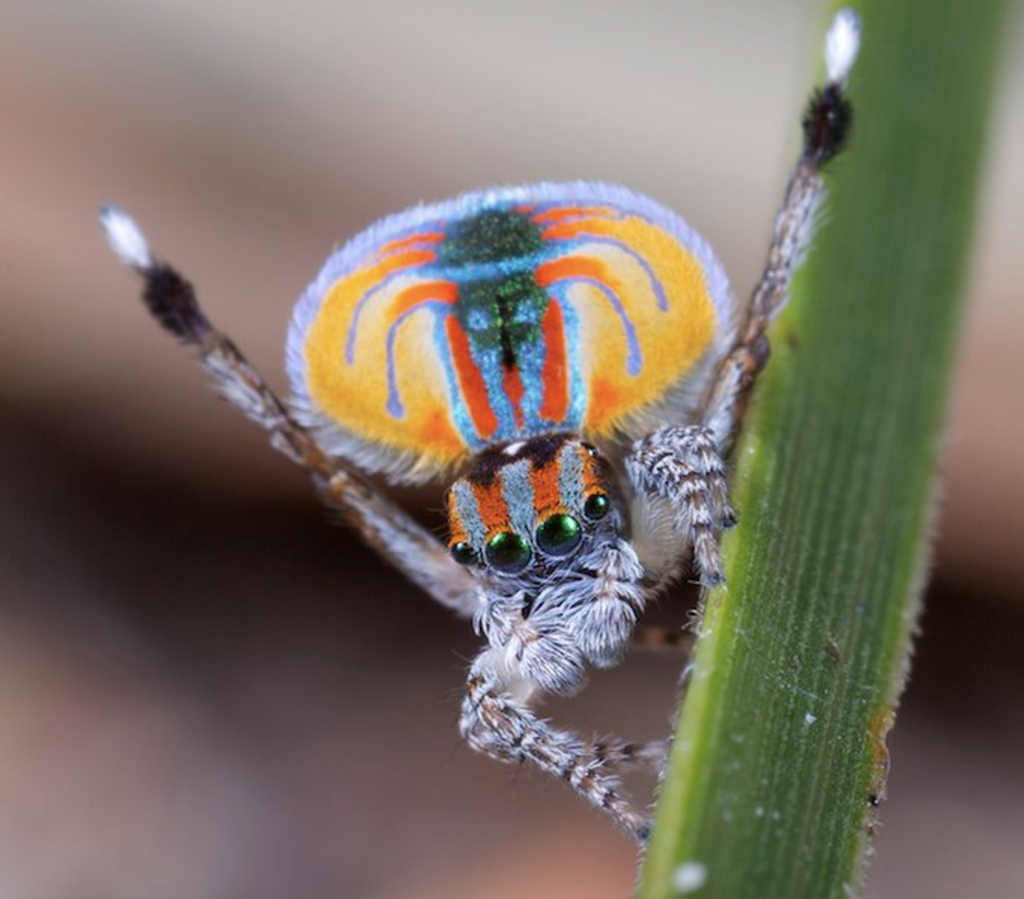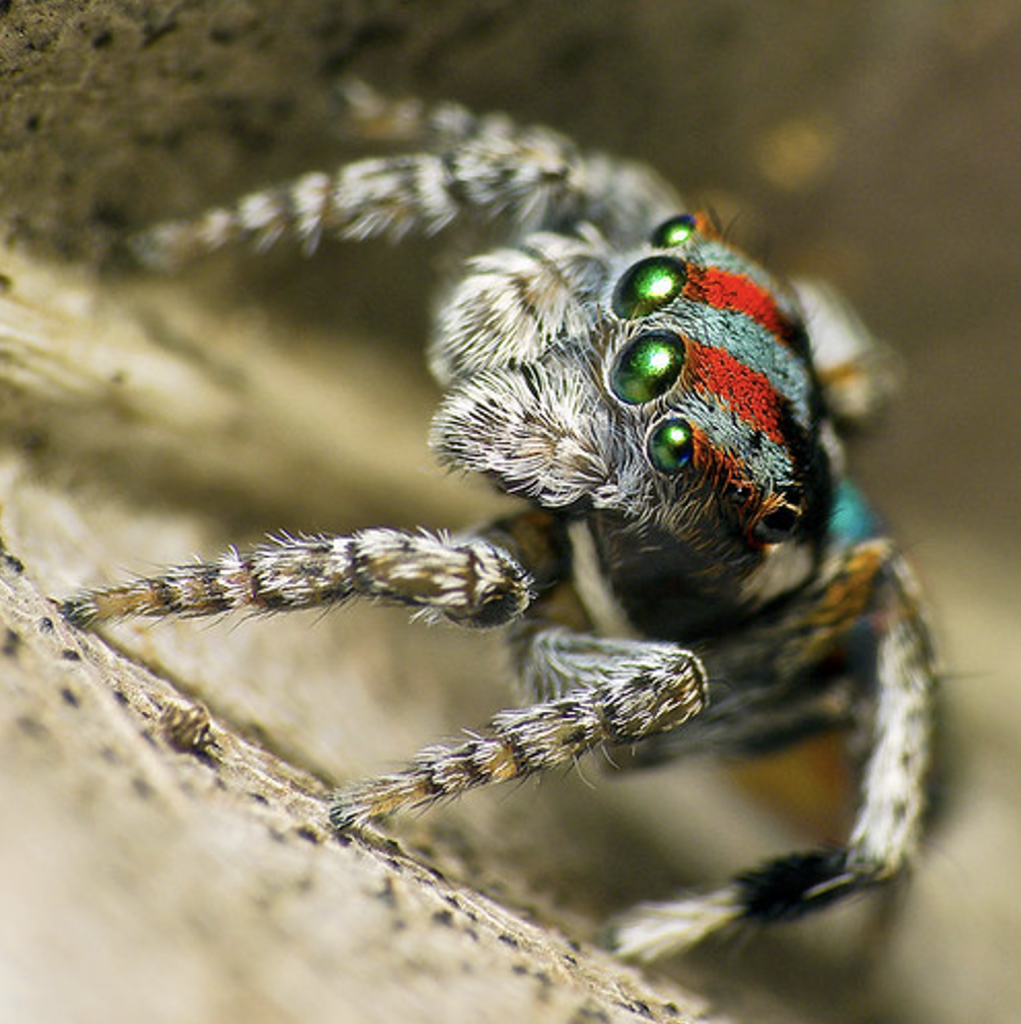Maratus volans, commonly known as the Flying Peacock Spider, is a species of jumping spider found in the Moggill Creek catchment. It is known for its vibrant colours, intricate courtship displays and unique behaviour. Flap-like extensions to the abdomen can be raised or lowered rather like a Peacocks tail. These extensions were once thought to help the spider jump through the air, thus the name – Flying Peacock Spider. This has since proven incorrect, although these spiders are very impressive leapers.
M. volans is a very small spider, measuring only about 5 millimetres in length, with females being slightly larger than males. The male spider is famous for its elaborate courtship dance, which is performed to attract a female. During this dance, the male performs a series of movements, including waving his colourful legs, jumping, dancing, and vibrating, displayinghis bright iridescent coloration and raising the coloured flaps on his abdomen. The female spider is attracted to these displays, and if she is impressed, she will mate with the male. This behaviour has evolved over time as a way for the male to show off his genetic fitness and to increase his chances of finding a mate. The dance displays have proven very popular on social media and continue to enthral and entertain.

Male Flying Peacock Spider – photo Jürgen Otto
The body of M. volans is covered in a rainbow of colours, including shades of blue, green, yellow, and red – the result of structural coloration. The colours are produced by the way light interacts with and reflects from the spider’s exoskeleton. The vibrant patterns and colours of the male’s abdomen are used to signal to females during courtship and to ward off predators. The female, on the other hand, is more subdued in coloration and has a more compact body shape. Notably, these spiders have two large central black eyes (from their set of eight), which contribute to their charm, giving them an endearing, “pet-like” appearance.
Peacock spiders are found in a variety of habitats in Australia, including open woodlands, scrublands, grasslands and coastal forests from Gladstone, down to central Victoria. The Flying Peacock Spider is a solitary animal that primarily feeds on small insects, such as ants and flies. Despite its small size, the peacock spider is known for its agility, visual discrimination, and speed of response, making it a formidable predator in its habitat.
Thanks to improvements in digital camera technology, YouTube videos, and some intrepid and passionate arachnologists, after being virtually ignored by science for decades, Maratusvolans is now well-known and studied. Some credit this group of spider species with leading to a renewed popularity in entomology and arachnology (the study of spiders), as well as making spiders much-less feared and loathed creatures by the general public.
The careful and observant naturalist may spot this species in our catchment, usually in open spaces on the ground or in low vegetation. Known localities include areas near the Gold Creek Reservoir, the western slopes of Mt Coot-tha, and some well-vegetated parts of Brookfield. Despite its tiny size, no more than a large grain of rice, it is well worth searching for, but their tiny size often requires specialist photographic equipment to capture them in detail.
Sandy Pollock

Male Flying Peacock Spider photo Robert Whyte
Published in


